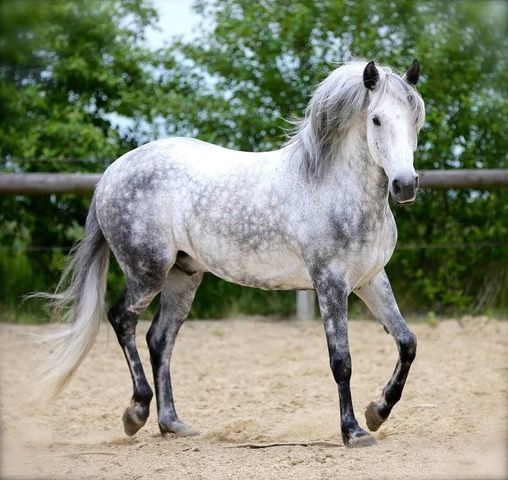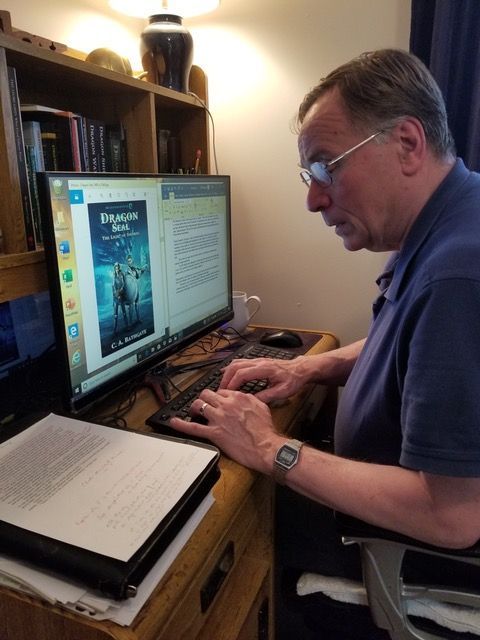Blog
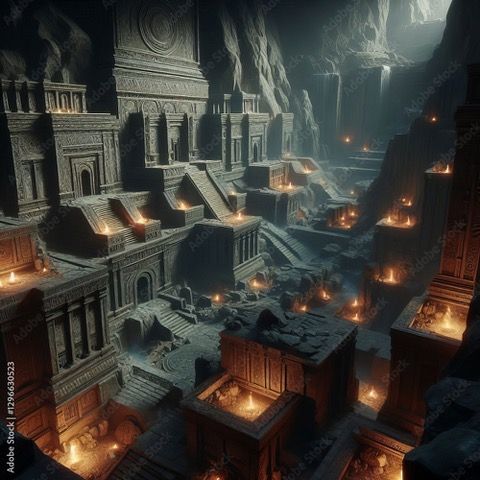
(Accompanying photo 1000_F_1296630523_dBa86kXYRBZfV1w6ZvO8uSKkI0J1y39P from stock_adobe.com) Used without commercial intent. In a generic sense, dwarves in the world of Valdain are much as might be expected by any reader of fantasy. Stubborn, argumentative, quick to judge and act, and suspicious of outsiders. It’s also true that they are generous to a fault with friends, tenacious, and highly skilled with metal working, excavations, and brewing potent ale. This will be familiar to anyone with a literary foundation in European myths and legends, or the works of J. R. R. Tolkien. The fractious nature of the dwarven people is illustrated in my writing. The dwarves established large, aloof communities wherever they found good rock and an abundant source of rich metals and gems. They stay clustered in single locations and build massive underground cities. These places are usually in mountainous terrain where rock is more readily accessible. Unlike the other blessed races, dwarves don’t establish land gobbling kingdoms like humans with cycles of expansion and contraction. They don’t retreat like the xenophobic elves to shelter behind impervious arcane barriers. They don’t cower and scatter like gnomes. In the world of Valdain, the dwarves were forced to flee from their original burrows in the west. (That’s another story.) The original refugees quarreled and split into smaller groups. Most of these bands perished, but some survived to find new mountains replete with good stone and generous veins of metal. Eventually, eight kingdoms were founded throughout the northern continent. Mafrolmonom is Dairug’s home community north of the human kingdom of Chiardim. Astshavboke is north of Valdain, and will become prominent in later novels. Kiberbilshud is in the mountains east of Valdain. The remaining kingdoms are Nansogion, Ranuhimoir, Gendedukol, Thikuzahar and Horasterond. Each of the dwarven kingdoms has adopted specific and unique defenses against outsiders, including attacks from avaricious dragons. The following is a brief description of three kingdoms important in the Dragonshadowed novels. A full description of each would require separate blogs. Mafrolmonom : The youngest of the established kingdoms relies upon natural magic to form the bulwark of it’s organization and defense. The main entrance is carved from a massive lode of elemental crystal and augmented by more enchanted gems. No shadows are possible within the light of this area, while the true nature of any creature is revealed. The crystal also repels magic of all descriptions, and cancels the magical nature and abilities of intruding folk. The top of this mountain is a plateau with naturally occurring gate to the elemental air realm. Astshavboke: Protected by the outer trade fortress of Oszuntor, the central city is divided into two distinct parts. Outside of the mountain, a trade district has been designated in which escorted non-dwarves are permitted entry. The interior city district is accessible only be true dwarves. Dwarves not native to Astshavboke must be escorted or vouched for by a local official. The underground interior is constructed in a series of circular layers, each of which has unique defenses and can be flooded with a variety of lethal materials. Kiberbilshud : The dwarves of this kingdom have removed the surrounding mountains so that their mountain stands alone in a secluded valley surrounded by a river that divides like a moat to both sides before rejoining. Two colossal statues of dwarven warriors guard the pass, and are rumored to be juggernauts that can be activated against invasion. This kingdom relies on a number of false and trapped entrances enhanced with a variety of noxious substances including dragonbane and goblinbane. A dwarf is recognized as an adult when they reach sixty years of age, and an exceptional individual may live up to six hundred years. Most dwarves die before their two hundredth birthday from excessive labor, war, or accident. Every dwarf focuses on hard work, long-term planning, and attention to detail as a personal contribution to the entire community. These traits are the cornerstones of dwarvish society and culture, brought about by a need to create perfect underground living areas while almost constantly at war or preparing for war against goblins and other subterranean foes. Dwarves don’t expect help from other races during their wars, and have little time for surface conflicts. As a result, other races think of dwarves as insular and lacking empathy. A dwarf recognizes these traits as an expression of the most valued aspects of dwarvish society: family, blood, honor and tradition. This is summed up by the four basic foundations of dwarvish creed: The life of a dwarf is to be respected above all else. Justice for all, and in all aspects of life. Work in the spirit of service is worship. Respect the privacy of another as you would your own privacy. The underground kingdoms of the dwarves contain huge common caverns, vast market halls, and long wide passageways called ‘underways.’ Complex plumbing and air venting is engineered to keep every space comfortable. Typical underground dwarvish architecture boasts stone surfaces that are planed, smoothed, artistically shored up, and rune carved. Dwarves polish the natural beauty of stone in order to bring out the variations in texture, colour and minerals within the rock, much as wood workers utilize wood grain. The stone is further enhanced by carving and insetting gold, silver, and other reflective metals, with cleverly faceted gemstones. Ruby, beryl and opal are popular, as these gems catch, reflect and scatter light from crystal lamps and chandeliers. Arches and flying buttresses are a common and recurring feature of all dwarven architecture. Dwarves do not consider any area truly finished until all stages of stonework are completed. Many common passages and almost all private living areas will include paintings, tapestries and banners. Aside from traditional runes which promote dwarvish virtues, decorations honor history, heroes, leaders and deities. Surface races (called brightsiders by dwarves) are often pleasantly surprised to discover that dwarven kingdoms are well lighted, using a variety of underground lichens, fungus, bioluminescent creatures, naturally glowing stones, and smokeless oils. Dwarves are perfectly able to navigate in pitch blackness, but prefer the cheerfulness of light to enhance the colours of artwork and the natural beauty of polished stone. The only areas of a dwarvish community which are always dark are mines, to avoid triggering explosive gasses and for security purposes. Living spaces for dwarves always reflect dwarvish culture, whether in common areas in which even non-dwarves are permitted, or private family quarters. Bright coloured banners and tapestries depicting common pastimes, legends, family feats, special occasions or great victories are displayed in public. These areas also boast of sunlight and starlight reflected through cleverly mirrored light wells for illumination of a unique carving, or into mirror pools and fountains to create a diamond-like effect. Wide, curving stairs allow viewing of carved and polished walls. Intricate and jeweled armor and weapons may also be displayed in areas reserved for important meetings or an audience with the ruler, as a means of over awing visitors with the wealth and martial capabilities of the kingdom. Each dwarven kingdom is ruled by a king and queen, and will recognize a master smith, a master artificer, and other ‘masters’ according to need. The community itself is composed of many ‘clans’, which are the equivalent of families or houses in a human community. Precedence of each clan is established by the wealth and date of founding. The leaders of the various clans form a conclave. The purpose of the conclave to make internal decisions and resolve disputes which are considered too minor to bring before the king. They are understood to be under the authority of the king, and meet to provide council as required. The exact composition of each conclave varies according to each kingdom, and may be as small as a few chosen members, or many hundreds of dwarves. Members of the conclave wear dark blue robes when in council or performing an official duty. Dwarven clans are usually also famous for one or more special crafts, such as engineering, stone work, forging, or gem cutting. The established guild master’s word is law within a work area, and may over rule the direction of a chieftain or thane. Each clan has a special clan name, which is taken as the second name by every dwarf. These clan names are more important than a mere clan grouping, as the clan name allows every clan dwarf to share in both the glory and shame of the clan collective. As males heavily outnumber dwarven females, all female dwarves are honored and protected. Females that venture into the outer world usually do so in the company of many males. They wear false beards and act as junior dwarves who rarely speak. While most dwarves are fiercely loyal to their family, house and kingdom, an offending dwarf is punished if they succumb to greed or commit an atrocity. Execution, even for murder, is considered an honorable sentence among dwarfs. In extreme cases suffering prior to eventual death is required. The guilty dwarf is labelled as ‘slag’ or ‘slaga.’ A slag is exiled from the community and marked with a dirty and unkept beard. Some slags shave their beards as an additional humiliation. A slag may only be reinstated by performing an exceptional feat of arms in service to their former community. While most dwarves prefer to remain within their underground kingdom, some dwarves seek adventure, wish to travel, or are otherwise forced to leave their kingdoms as traders or ambassadors to the surface world. These are the most likely to be encountered by surface dwellers unless they run afoul of a slag. Most crafts are worked in stone, or occasionally crystal as lesser materials tend to wear out over the life span of the average dwarf. They see no purpose to creating a masterwork which will only last a century or two. As such, their preferred material is stone, which is summed up in the common dwarf remark “stone endures.” . . . and the dwarves endure as well. ~~~~~~~~~~~~~~~~~~~~~~~~~~~~~ The following is a special treat for my readers which may appear as a scene in my 10 th Book. It’s a rare event in which the dwarf, Dairug, recounts an adventure from his youth. The story also provides insight into the culture and life of a dwarven band. “It didn’t seem like much at the time . . .” Dairug paused and surveyed his companions over the light of the camp fire as he tried to read their expressions. The ruddy light cast unfamiliar shadows over their faces, and the smoke sting didn’t help clear the matter. “Hrrrump.” He cleared his throat, aware that everyone knew he was stalling. Easy for humans to talk about their past. Not dwarves. “I was with a survey party of five other dwarves led by Master Ordrik and his son, Orgar. He took two brothers, Broin and Burin, as guards in case of trouble, and the cleric, Granikar, for healing. He included me because he needed an engineer and I’d just made a name for myself saving a mine from the crumbler. And my share of anything we found wouldn’t cost him much.” The dwarf glared. No one commented about his admission. They don’t want to give me an excuse to stop my story. “It was a few winters after the big battle where we joined with humans against the wizards and their gobbos. The mountains between our lands were calm and the humans were prospecting. Ordrik figured to try his luck, maybe get rich. If nothing else, humans are poor at finding good strikes, so he’d sell them locations to anything not worth his while.” Areskel smirked. “Those were good times. Good hunting.” “Hunting?” queried Tamsin. “I thought you didn’t eat meat.” “Gobbos,” replied the elf. “Apologies for the interruption.” He waved his hand for the dwarf to resume his tale. Dairug ‘hrruphed’ again. “We followed a likely dry creek bed up a ravine where the rock was exposed. It was night, so the stone and any surface metal would cool differently making anything worthwhile easier to see. That’s the advantage of keen dwarvish infravision.” He glanced at Rarnok, but the hurk kept silent. “We didn’t find anything worth marking when Burin called a halt. Someone, humans likely, had made a dry pond across the ravine. They’d built up a scree behind a stone wall to catch water or reduce the impact of a flash flood. Whichever. There were some twigs caught at the base, and an easy sloping path to the right so animals might drink, but no water. “The choice was to continue on by descending into the dry pond or retrace our steps. Like I said, ‘it didn’t seem like much at the time.’ Master Ordrik decided to continue in hopes of better luck higher up. “Everyone clambered down except for Broin, who was guarding the rear. He’d just tipped himself over the dam edge when the gobbos attacked. Arrows everywhere. But they’re lousy shots and all they hit was armor and shields. They were all lined up on a ledge where we couldn’t reach them. Howling like banshees because they figured we were finished.” His friends leaned forward, intent on catching every word. “Everyone but the fighters dashed under the gobbo’s ledge for cover. Burin ran to the shallow slope to find another way. That’s when his foot went through the dirt covering a wicker frame and we realized we were in a pit. Broin tried to follow, but he’d wrecked one of his legs and fell.” Waving his hands, Dairug’s voice rose. “Granikar dashed to heal Broin or drag him back and took an arrow for his trouble. Burin broke free and used his shield to cover his brother and the cleric, then dragged them back to the rest of us. We patched our hurts as best as we could, but Granikar only knew simple healing. It was a tight spot with the gobbos carrying on with whoops and hollers.” The dwarf spat. “Dwarves don’t panic. We had two good shields for protection and were under the lee of the cliff ledge so the gobbos couldn’t get a clear shot. All we had to do was sit tight and wait for the day star to rise. The gobbos wouldn’t see so good, maybe blinded, and we’d just walk out.” His friends all nodded understanding. Even Rarnok. “They used ropes so that one of their archers could lean out with his bow. Orgar had a crossbow and picked him off. It got real quiet. We figured we’d be all right. “Trouble was, gobbos can be very clever when it come to traps and killing. Water started pouring down the creek bed.” “Unpleasant, certainly, but you could still cling to the rock face,” said Tamsin. “Maybe you humans, or an elf. You’ve heard me say, ‘dwarves don’t swim, they sink’? We’re sturdy folk. Heavier muscle mass that allows us to endure when others can’t go on. We’re like stone, can’t swim even if we knew how. Just like trolls.” “Trolls can’t swim? I never knew that,” murmured Gyrfalcon. “They were going to drown you,” said Tamsin. “Aye. And nothing we could do about it. Or so it appeared.” “So how’d you escape?” asked Rarnok, clearly impatient. “Dwarven smarts.” Dairug tapped the side of his head. “You remember how I said the gobbos were on a ledge above us? All gathered in a tight group to watch us panic or listen to us drown. Well, we were on a mining expedition and had mattocks. I pointed to where the rock face was weak. We hammered that rock as only dwarves can. Brought the whole face down, gobbos and all while we covered up with the shields.” Dairug grinned. “The gobbos got themselves a nice bath before we chopped those still able to fight. The others drowned while we boosted ourselves free.” “Never underestimate a dwarf,” confirmed Areskel. “Especially around stone.”
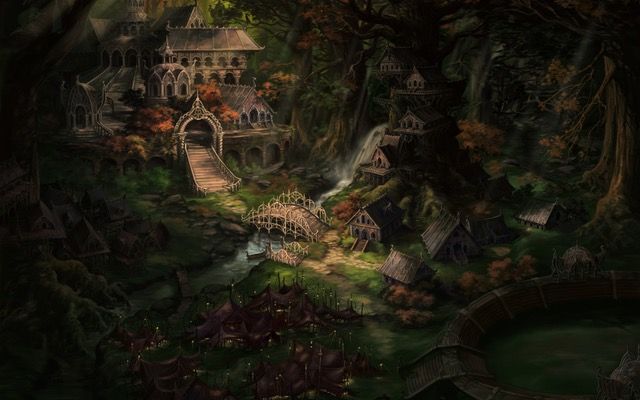
The Dragonshadowed series makes it clear from the beginning, that elves are ’known’ to be extinct, mythical creatures within the kingdoms of Valdain. The reader knows this to be false, as one of the main characters, Areskel, is an elf. So why the apparent discrepancy? As mentioned in earlier blogs, elves are the first of the ‘Blessed races’, that include humans, dwarves and gnomes. They have been allied with these other races from the earliest days of pre-history. All of these races have endured different trials and have reacted over aeons according to their nature. Elves are an immortal race, a trait shared only with dragons and a few very rare others. They can be killed through acts of violence, accidents, and some poisons or disease. If they weren’t immortal, their low birth rate would extinguish the elven race within a few generations. Most elves have an affinity with the natural world and are adept with the use of magic. All elves are able to transition between the mundane world and the fey realm of Between. Encounters with elves outside of their home kingdoms is rare, and virtually unknown the farther east one travels in human lands. Areskel is one of those rare anomalies who was born in human lands, and not subject to elvish law. In the distant past, the elves were as numerous as any other race, and ruled over a vast empire. They were allied with other races in addition to the blessed races, and fought wars against many adversaries. Over aeons, these wars progressed into what we would think of as magical thermonuclear war. Many of the elvish foes were wiped out, others reduced to shattered remnants. The empires fell, as did many forgotten allies. The elves never recovered. The surviving elves formed dispersed communities, surviving because of their great facility with magic and occasional help from others. The main kingdom called itself Tylphyne, located in the forests northwest of the Hescmarc plains and adjacent to the human kingdom of Glordonia. They surrounded their territory with a great barrier of fog, entwined with powerful spells to keep others out and their own population safe within. The few elves wishing to leave their kingdom were not allowed to return, and had to accept self-imposed exile. In more recent years, grudging contact with the outside world has made the elves of Tylphyne aware of other elvish kingdoms. Westernesse is located far across the Black Mountains, small communities of elves exist in arctic fastness, and winged folk live on a mountain above the jungles of the Green Hell on the southern continent. Even with this new knowledge, most elves remain aloof, suspicious, and xenophobic. The kingdom of Tylphyne is Areskel’s ‘home’ kingdom, as he married one of their princesses. He was able to enter that land after a series of adventures and unique circumstances, where he met his wife’s family. As a reader might imagine, that story is long in the telling—much too long for a short blog. Tylphyne is a land of forests, mountains, and swift flowing rivers and streams. Everything remains in a state of perpetual high spring. Flowers bloom, fruit is always abundant, and the air is filled with sweet scents and soft music carried by ever-gentle breeze. Aside from elves, the most prevalent denizens are various fey creatures, who perform as entertainers and servants. Members of the other blessed races also live within the elvish kingdom, but may never leave to return to outside lands. For the most part, elvish communities blend and merge with the surrounding natural environment. It’s possible for a non-elf to walk through the main street of many elvish communities and not realize that they are in a town or village unless confronted with many elves or fey. Castles of the great lords, and revered temples are the exception, and easily seen, often from a distance. These structures are slim, elegant, and usually display colors not found among other races. In addition to the surrounding fog bank, the elves are protected by a few allied dragons, other winged creatures, and unicorns. A strong royal guard patrols to exterior forests. These elite warriors use bows that can hit anything within their extended vision, ride winged mounts, and employ a variety of enchanted weapons and spells. Each elven kingdom is ruled by a senior king and queen, aided by an appropriate number of lesser rulers. The elves value harmony, unity, and service foremost, but only to others of their race.
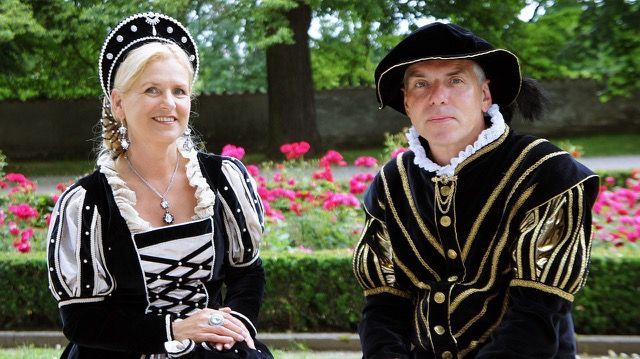
As a writer and author, I’ve been keenly interested in history from my early years. Not just the dates, wars and battles, but ‘why’ events happened and the ultimate results. As my knowledge base grows, I’ve developed a fascination with how one event affects other people or events, often in seemingly unlikely or unrelated ways. Aside from politics and action, I’ve deliberately chosen to place the fantasy world of Dragonshadowed firmly upon the basis of our own early medieval period in western Europe. The ‘Dark Ages’ of about 500 to 600 A.D. Unsuspecting readers will be introduced to real history in the course of following the adventures of my protagonists, even if in a realm replete with magic and fabulous creatures. As the culture is ‘western Europe’, there won’t be oriental or middle eastern elements in these stories. Likewise, none of the characters will run about in loincloths and chainmail bikinis. Movie romance aside, well toned skin provides no protection against lethal weaponry. And it’s too cold, even for barbarians. The countries of Valdain aren’t the familiar society of the 21 st century. Life is raw, and often violent and short. The environment is either relatively pristine or polluted. Law and justice are determined by whoever wields the strongest sword. Only the use of magic or divine intervention mitigates the harsh lives of all folk. What people wear is no different. Weapons, armor and tactics are decided by, and based upon, what was prevalent in the early medieval period. I add augmentation from magic and the talents of non-human folk to my descriptions and cultural foundation. The attire of small and great folk outside of the battlefield is similarly based upon what might be considered ‘jeans and a t-shirt’ or ‘ballroom style’ in our century. Garments are a clear signal of a person’s social status. This consideration isn’t arbitrary, as the way people dress affects their expectations, and what is considered ‘normal’ interactions. People act differently when addressing a laborer, merchant, knight or noble. In a medieval society, class distinctions are more marked, as a serf that disrespects a knight is likely to be punished or even killed. In Valdain, this is taken an extra step in that all persons of lesser social status must wait to be acknowledged, then addressed first, by their social superior before speaking. Clothing also affects day-to-day activities. As an example, no one had pockets in the middle ages. Money and valuables must be carried in external pouches suspended by strings, and are vulnerable to a thief’s knife blade. This small detail serves to launch major events in Dragon Hall, Book 6, of my series. Underwear and socks were unknown. Men had a piece of buttoned cloth over their privates that allowed them to relieve themselves without the necessity of lowering their breeches. Women might shift their stance to achieve the same relief beneath dresses, then move on with no one the wiser. Most garments were constructed of many pieces, unlike the shirts and trousers of our society. As an example, a shirt consisted of the main back and chest covering, with separate sleeves buttoned at the shoulder. Additional cuffs and collars might be added according to need and the wealth of the wearer. Aside from the practicality of discarding only whatever became worn-out, this allowed a person many opportunities to display a variety of ‘looks’. Accessories were important. Jewelry was often more than an expression of wealth. A brooch or pin might serve a practical function of fastening a cloak, a sash, or restraining the use of a weapon under a ‘peace bond’. It could be used to advertise nationality, marital status, interest, or even actively looking for a mate. Of course in Valdain, gems and jewels are often enchanted as they are durable and can hold spells or magical effects for extended periods of time. In Valdain, color choice is more than a reflection of available cloth. Colors are used to identify noble houses and territories, and are vital in a court setting. Knights display their colors and devices whenever possible, but will cover their colors and shields when unwilling or unable to accept challenges. Most knights accept this convention and won’t challenge another knight that covers their colors. For most persons, the idea of ‘fashion’ such as we know it today, doesn’t exist. As long as garments are functional, it’s much the same for everyone. At court, especially a royal court, it's different. Nobility in a court dresses according to the colors and choices of the most senior lord and lady, possibly swayed by an acknowledged dilettante. The colors chosen by others are a clear signal of open alliances, but must be considered in addition to body language, expressions, or gossip in a court. Medieval courts are rife with intrigue and deception. Readers of the Dragonshadowed series will be familiar with clothing choices made by the main characters throughout the initial novels. Future novels, starting with ‘Dragon Hall’ will pick up and expand upon this theme, to be further embellished in scenes within Books 8 and 9 – Dragon Court. I trust—with thanks—that you’ll be with me to follow the adventures of Tamsin, Gyrfalcon and their friends as I’m able to release future novels and novellas. I promise you’re in for quite a ride! Accompanying photo from pixabay.com: medieval-3061978_1280. Used without commercial intent.
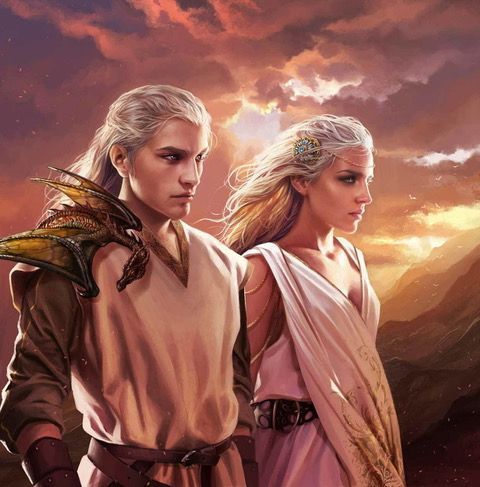
Almost all fantasy novels will include one or more races in addition to humans. Some may be allied as elves, dwarves and hobbits in Lord of the Rings, or as members of society like gnomes in the Harry Potter series. Still other races will be adversarial as goblins or trolls. Occasionally, humans may not even exist in a fantasy story. I’ve chosen to base the Dragonshadowed series in the human dominated land of Valdain. The various kingdoms admit and recognize other humanoid races as part of their magic dominated culture. Some of these ‘races’ might be considered more monstrous than integral to society, such as ogres, trolls and giants. Even goblins are regarded as hired muscle, much as the ancient Romans considered the barbarian Celts they employed as servants and soldiers, or enslaved. Setting my stories in human lands allows a reader to easily understand this new world. As a writer, I’m able to assume some norms familiar to the majority of people who enjoy the fantasy genre. Differences are introduced slowly, layer by layer, as the characters become familiar along with the culture, customs, and plot of the series. The first novel, Dragon Watch: A Dawn Before the Storm, starts off calmly in contrast to subsequent novels. It’s my attempt to ease a reader into an alien world in which the laws of magic have trumped the scientific laws of our own world. So why the ‘blessed races’? Even in the world of Dragonshadowed, the term is rarely used except by educated sages, mages and priests when discussing events that span history and legend. According to the earliest, dim recounting, specific races were created and blessed by the creator and king of the gods, Elavodair, at the foundation of the world. All other races came later as a result of cosmic wars at the transition of each aeon. There are four races, designated as the ‘blessed races,’ in the world of Valdain. Elves, humans, dwarves, and gnomes. In general terms, these four races have always allied against threats to one of more of the others. Each race possesses specific advantages and limitations, and each has a number of ‘homelands.’ Readers familiar with Lord of the Rings will recognize that the races of elves and dwarves bear similarity to the foundational works of Tolkien. However, I also add surprises in the form of traits more common to legendary sources. Gnomes are based on Celtic, Scandinavian and Teutonic legends. Elves are regarded as the first blessed race, even though considered extinct and legendary by the folk of Valdain. Readers of the Dragonshadowed series will be aware this isn’t true, as the character of Areskel is an elf. As a race, elves are immortal unless killed by an accident, war, or a rare disease, but have an extremely low birth rate. The main elvish homeland is far to the west of Valdain, and lies on the western border of Glordonia, north of the fabled city of Domagaf. Called the ‘Elfwood’ or “Elwood’ by humans, the elvish inhabitants refer to their forest land as Telphyne. This land is surrounded by a barrier of impenetrable fog and mists, as the elvish people have suffered grievous losses from wars and become xenophobic. Other elvish kingdoms do exist. Areskel mentions the kingdom of the winged elves on the southern continent, and the elvish kingdom of the far west. Humans may meet elves away from their homeland, but these incidents are considered as rare as encountering a unicorn or other legendary creature. Humans are considered the second of the blessed races. Their civilizations dominate the northern continent and much of the north coast of the southern continent. Humans have the advantage of the highest birth rate and a near infinite variety of talents. You can read more about humans in a fantasy environment in all of the Dragonshadowed novels. Dwarves make up the third of the blessed races. There are a reclusive race that inhabitants nine underground kingdoms carved from mountain stone in search of metal and gems. They are longer lived than humans and resist great heat. Most are taciturn and reclusive, but not as xenophobic as elves. Many dwarves venture into the upper world to trade and obtain goods unavailable in their sunless halls. The dwarvish character of Dairug is an adventurous diplomat and metalsmith. I’ll be writing more about dwarves and their culture in a future novel when Dairug visits one of their mountain communities. The last of the blessed races are gnomes. Smaller than dwarves, these clever folk inhabit homes beneath the earth in hills and forests and are adept at hiding. However, many gnomes have integrated their communities with humans. Gnomish crafted goods and jewelry are highly prized. The gnomes profit from human foodstuffs in turn, for which they are either too small or vulnerable to farm for themselves. I intend to provide additional information regarding each of the non-human races in future blogs. In the meantime, if you’re curious, please consider an inexpensive purchase of any of my books. Thank you!
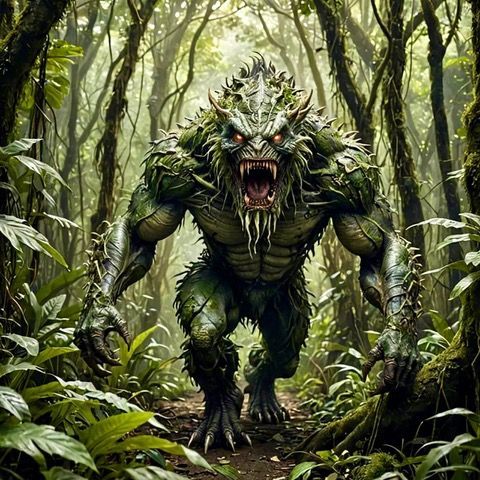
Every good fantasy novel requires one or more monsters. Good, bad or indifferent. It wouldn’t be a fantasy novel without one or more monsters. Fortunately, the fantasy genre has plenty of monsters. More than enough for any author given the profusion of movies, books, and various role-playing fantasy games. Unfortunately, that wealth of possibilities contains a trap for the budding author. Many of these same creatures are copyrighted creations. It’s true that ‘The Wizards of the West Coast’ have granted an open license for use of their products. It’s also true they revoked that license although reinstated the same (as of this writing). But what they’ve done once they could do again. And this possibility presents a real dilemma to any author, especially should their works of imagination – intellectual property if you will – attain any meaningful commercial success. My solution is to use only monsters firmly established in legend and mythology. Public domain creatures. Even these I attempt to add personal, inventive twists to distinguish each from anything found in D&D, Pathfinder, or similar copyrighted products. Some monsters are creations of my imagination. As an example, dragons are a must in a series titled ‘Dragonshadowed’. When writing, I avoid naming dragon clans by color. Instead, the clans are identified by their main offensive weapon or primary habitat. Hence flame dragons or timber dragons. Their scale color is arbitrary, and some of the dragons I write about alter their breath weapons, as can mighty Delgarathon. For more on how I view dragons, check out the novella ‘Dragonflight’. Any lover of dragons will find a wealth of new information, and dungeon masters will be well rewarded. Monsters abound in the world of Dragonshadowed, even in the human lands of civilized Valdain. Some appear to be human, and others are human though of a monstrous disposition. A reader will encounter shapechangers, lycanthropes, and various undead as they partake in the adventures of the protagonists. Some of these creatures will be obvious, others surprising, and a few won’t be revealed. All as one might expect in a ‘real world’. After all, a shapechanged creature isn’t likely to advertise the fact. They’re shapechanged as a disguise for a reason. As an author, I require a logical and consistent foundation for the fantasy world in which the laws of magic are more powerful and prevalent then the scientific laws of our own world. Aside from how magic might be integrated into a society or culture, this must also apply to non-human species of all sorts. Goblinoids are plentiful and disposable muscle. Useful for anyone with the ability to pay and power to keep these unreliable servants from creating a bigger nuisance. As individuals they’re thugs, and when numerous form warbands of employable mercenaries. Or brigands. Ogres are similar, but bigger and stronger, and often possess one or more additional tricks to keep events interesting for the characters and readers. As ogres are easily recognizable and generally distrusted, they keep away from human communities unless employed by nobility as part of their military forces. Bigger and more powerful trolls are much the same as ogres, but need to be controlled by magic coercion, or will spread havoc due to their malicious nature. Trolls have affinity to other enchanted realms, and will always have one or more innate magical abilities. They may not heal or regenerate as in most role-playing games, but may possess enhanced senses, offensive or defensive powers, or something completely unexpected. I also recognize the Scandinavian curse ‘trolls take you.’ If invoked, the target of this curse can expect a troll encounter in their near future. Aside from humanoid monsters, the world of Dragonshadowed is inhabited by griffons, hippogriffs, harpies, hydras, basilisks and manticores. This list isn’t exhaustive, but if a monster exists in folklore, it exists in this fantasy world. Like goblinoid migrants, the folk of Valdain ‘tame’ these creatures in much the same way we’ve tamed livestock or utilize machines as part of their day to day culture. Whenever possible. Many monsters can’t be tamed, only controlled through magic. Others remain wild, and will penetrate civilized lands much like rabbits, coyotes and bears do in our world. Curtailing their intrusion is a task for knights and wizards. All to say, this is your invitation to enter an alternate world for a few hours, and experience for yourself how it all works. Book 1, the Dragon Watch novel, awaits.
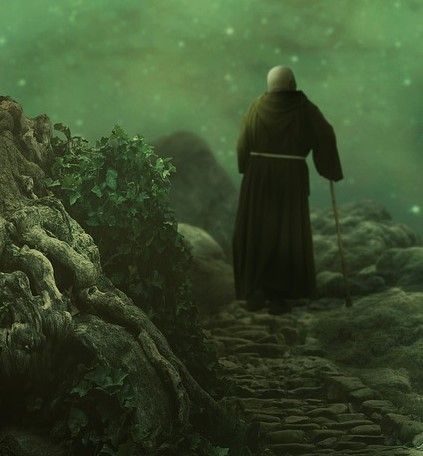
In any novel, a common writer’s technique is to include one or more characters who ask questions or provide information. These characters serve to force the protagonist to contemplate their actions or answer motivations on behalf of the reader. Alternatively, these characters provide information to propel the plot. A well known example of this is Hermoine in the Harry Potter series. Within the Dragonshadowed series, I employ Boulder to fulfil this important function. He asks questions and the answers he obtains informs the reader. Boulder is an ‘outsider’, even though accepted by the rest of the main characters. He’s the newest and least powerful member of the fellowship. Much of Valdain’s culture and civilization are mysteries to him. Keenly intelligent, Boulder watches and attempts to learn as much as possible while remaining quiet. He speaks only when spoken to, or when he encounters a situation that defies a logical conclusion. While he learns, he does as much as possible to earn his place by aiding his friends. Boulder doesn’t know much of his origin beyond what his human mother mentioned. She never spoke of his non-human father other than to acknowledge that his blue skin color, height, and affinity to the earth are inherited from his sire. He grew up cloistered in a temple dedicated to Namphyl, the lord of absolute Order, where his mother was dedicated as a priestess. He was a loaner and learned to respect others as a servant. His unnatural appearance and abilities chaffed against the priesthood’s expectations of an established norm. Boulder accepted their passive hostility as normal, knowing nothing else. His future changed one afternoon while attending a boring lesson. He drifted to sleep and slipped into the ground. This shocking feat was viewed as an unacceptable demonstration of rebellion, and young Boulder was summoned before the temple elders. The senior priests suggested that it was time that he explore the outer world and find his father. Boulder accepted the mission. As the temple was located in a remote town in Nova Valdain, he determined to travel to the heart of Valdainian civilization and obtain information. Still a loaner at heart, he drifted north, performing odd jobs. He possessed unusual mental abilities. Unable to see clearly, he compensated by sensing the presence of others through vibration in the earth. When he knew where to look, he could concentrate, but his behavior was often interpreted as a hostile stare. He booked passage on a ship, intent on making a short voyage across to Rashaic Sea to a kingdom in Valdain. Once on the water, he became violently sick. His shipmates assumed that he experienced a bad case of sea sickness, but to Boulder the malady felt fatal. He had to be carried from the ship to land at the first port. In Valdain, he survived by performing more odd jobs and living frugally. His needs were few, and he learned to sleep beneath the earth. Interacting with others remained difficult because of his odd appearance. Unfortunately, no one could provide any information regarding his father, aside from suggesting consultations with sages or mages. Both would require copious expenditures of money. He heard stories of the city of Domagaf, and was assured that the benevolent western wizards might help. Travelling west, his resources steadily dwindled, ultimately leaving him in a desperate situation well beyond the borders of Valdain. And no closer to his goal. He stopped at an inn by chance, hoping to find employment, information, or both. By chance, he observed a warrior with an upright sword etched into his shield and breastplate. That device reminded him of similar designs at his home temple, so he decided to speak to the man. That ‘man’ was Areskel. The two developed a rapport, and Boulder was introduced to the other people who would become his friends. Boulder’s life and subsequent adventures unfold in the various novels of the Dragonshadowed series. Here’s my shameless plug for you to plunge into my world of magical, epic high fantasy with your first purchase. Happy reading!


